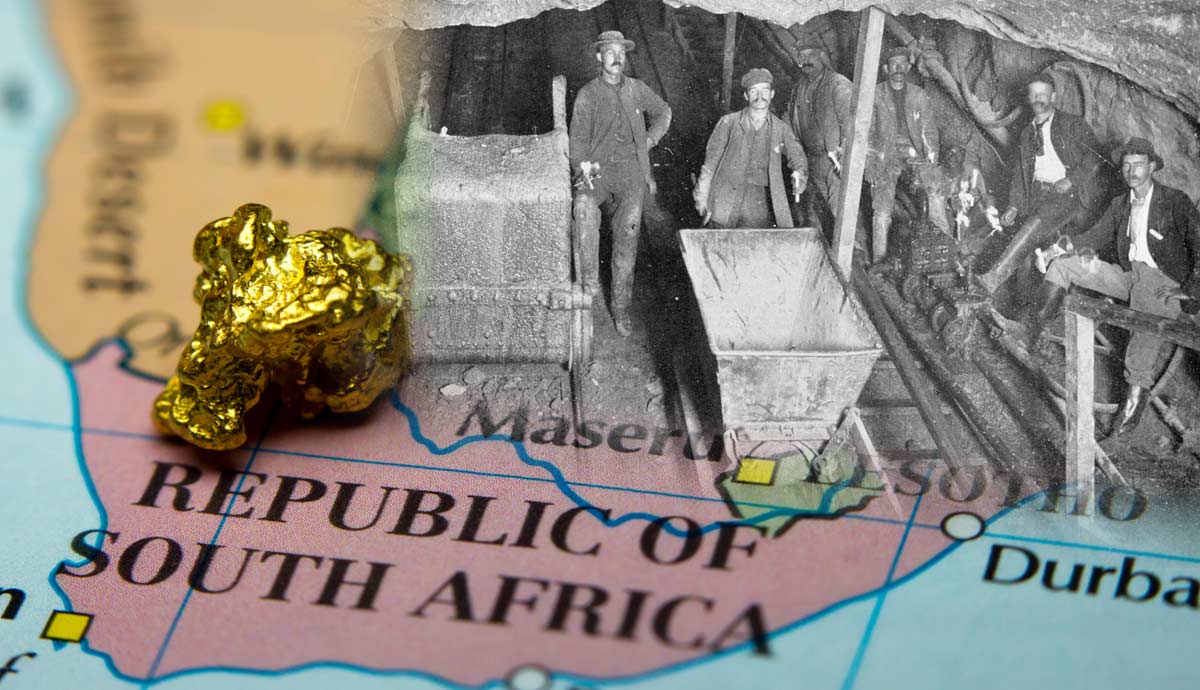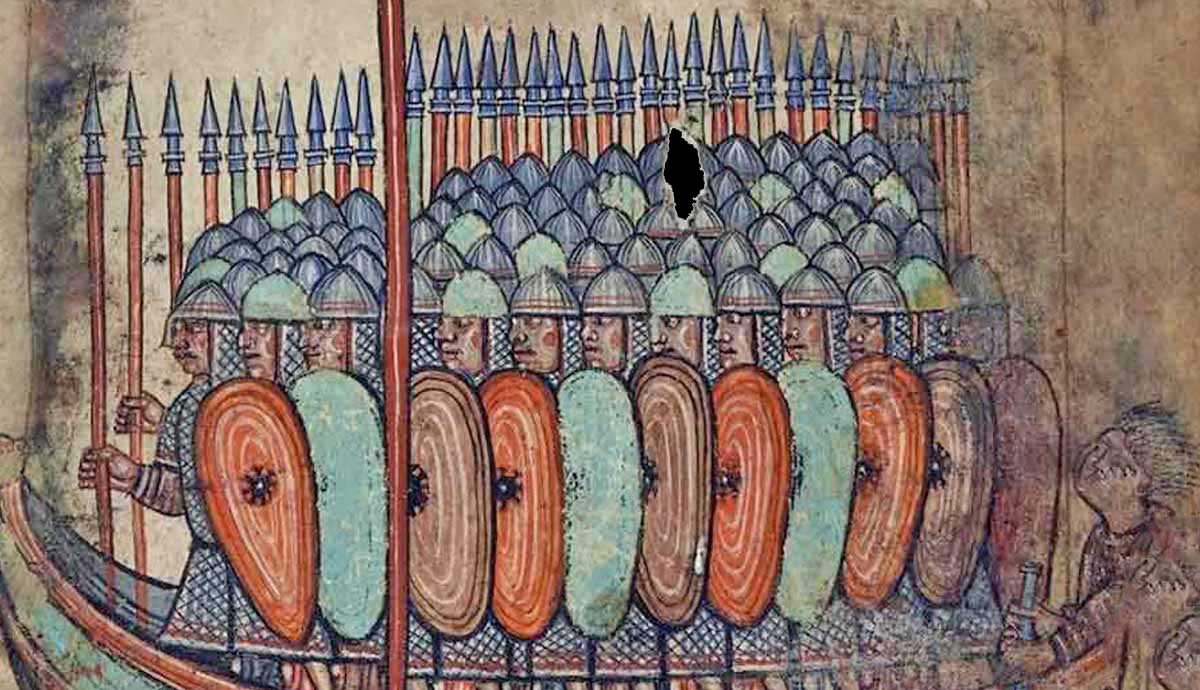
www.thecollector.com
The Turbulent Colonial History of the Philippines
The island chain nation of the Philippines, located in the western Pacific, has a turbulent history. Originally colonized by the Spanish as a base for trade in Asia, the Philippines were seized by the United States in the Spanish-American War of 1898. As a spoil of war, the Philippines became America’s only formal colony and was held despite a desire for independence by many Filipinos. During World War II, the islands were seized by Japan, resulting in one of the worst war crimes in history. Only after the war did the Philippines finally gain its independence.
Setting the Stage: Settlement of the Philippines
A map showing the first settlement of the Philippines and surrounding islands c. 30,000 years ago. Source: National Geographic Society
There is evidence that early hominins were present in the Philippines at least 130,000 years ago with remains of Homo luzonensis, a possible pygmy archaic human, found on the island of Luzon. Evidence of the earliest anatomically modern humans dates to around 47,000 years ago on Palawan.
The first largescale migration of Negritos occurred around 30,000 years ago, when lower sea levels allowed migrants to reach what is now the Philippine archipelago via land bridges. The most widely accepted theory is that this was part of the Out-of-Taiwan model that saw Austronesians migrate out of Taiwan to the Indo-Pacific islands as far as New Zealand, Easter Island, and even Madagascar.
Several independent states with their own history, cultures, and chieftains developed, including tribal hunter-gatherers, warrior societies based on ritualized warfare, upland agricultural societies, and seaside communities based on fishing and maritime trade.
Regular contact with Asia and the rest of the Pacific began around 1000 CE with Chinese traders, Arab traders, and Muslim missionaries. Islam found a foothold in the Philippines beginning in the late 1200s, with Islam becoming the predominant religion by the mid-1400s. Chinese traders regularly traded in the Philippines for exotic goods like spices, scented wood, and cotton, with the first definite reference to the Philippines occurring in 972 CE. Trade between the Chinese dynasties and the Philippines flourished between 1000 and 1400 CE.
Spanish Colonization (1565-1898)
A map of Manila, the capital of Spain’s Captaincy General of the Philippines, made in 1762 during British plans to attack during the Seven Years’ War. Source: Royal Collection Trust
In March 1521, Portuguese explorer Ferdinand Magellan, sailing for Spain, became the first Westerner to land in the Philippines. This first visit also became the Filipinos’ first experience with Christianity, as native leaders were invited to participate in Catholic mass with Magellan and his crew. Weeks later, a skirmish broke out between Filipino forces and Magellan’s crew as the native people did not want to accept Spanish rule. Magellan himself was killed by a poison-tipped arrow. In 1543, the Spanish returned in force under Ruy Lopez de Villalobos but were unsuccessful in seizing the archipelago.
Two decades later, the Spanish finally wrangled control of the country under Miguel Lopez de Legazpi, who established the capital of the Captaincy General of the Philippines at Manila. The Spanish wanted their new colony, the only one they possessed in the Pacific, to establish trade relations with China and Japan. Hoping to avoid the violence experienced when colonizing the New World, King Philip II of Spain forbade violence toward the native Filipinos. A hierarchical society was established in the Philippines, firmly governed by Catholicism. Although the Philippines did not have as many natural resources as the Spanish desired, it became a popular trading hub in the Pacific, which later sparked conflict among Spain, the Netherlands, and Britain.
1898: The Spanish-American War
American troops in the Philippines during the brief Spanish-American War in 1898. Source: WGBH Educational Foundation
The 1800s saw a rise in independence movements in Spanish colonies. In 1872, the Cavite Mutiny was a short-lived attempt at freedom by Filipino soldiers and laborers. While the mutiny was put down quickly, it fueled local independence movements. This grew into an armed conflict between Filipinos and the Spanish government by the mid-1890s.
The United States seized on this revolt, plus the Cuban War of Independence, to try to gain geopolitical control over these desirable territories. When the USS Maine exploded in Havana Harbor, Cuba, on the night of February 15, 1898, Spain was quickly blamed, and war was declared.
Only days after the declaration of war, an American fleet destroyed the Spanish fleet guarding the Philippines in the Battle of Manila Bay. Swiftly, almost 11,000 US soldiers were sent to the Philippines to capture Manila and seize the Spanish colony. On August 13, one day after the Spanish-American War formally ended, the US troops captured Manila. In the brief war, a crushing American victory created a new American Empire: the Philippines, Cuba, Guam, and Puerto Rico were ceded by Spain in the peace deal. In exchange, the US paid Spain $20 million for the entirety of the Philippines.
1899-1902: Philippine-American War
Many Filipinos were outraged that, instead of being granted independence, they were a colony under a new master. Under nationalist leader Emilio Aguinaldo, armed uprisings began in early 1899. The United States maintained control over the Philippines, arguing that granting it independence would simply allow other colonial powers to conquer it. As the Philippine War raged, many prominent Americans criticized the colonization, insisting that holding a colony violated America’s core values.
A political cartoon criticizing American colonization of the Philippines during the Philippine-American War of 1899-1902. Source: Bayanihan Worldwide Foundation
Aguinaldo, a young general, at first attempted to fight a conventional war against the United States. Failing to take Manila at the outset of the war, Aguinaldo shifted to a guerrilla war, frustrated by both low levels of supplies and virtually no international support. After Aguinaldo himself was captured in 1901, the conflict ground to an end the following year. Ultimately, some 4,200 US soldiers had been killed over three years of warfare, versus some 20,000 Filipino soldiers and around 200,000 civilians. Besides the capture of Aguinaldo, the US helped draw down the conflict by granting some self-government concessions and economic benefits to the Filipino elites.
American Philippines
A passport issued to Charles Yeater, who served as the American Governor-General of the Philippines during the World War I era. Source: Our Passports
Between 1902 and the outbreak of World War II in the Pacific, the United States exercised full control over the Philippines. The first American-installed Governor General of the colony was future US President William Howard Taft. During the early years of occupation, sporadic violence between US troops and Filipino rebels continued. In 1909, General John J. Pershing, of later World War I fame, became governor of the violence-prone Moro province, where a low-level uprising persisted between 1904 and 1913. After this violence was quelled, more autonomy was finally granted to the Philippines under the Jones Act of 1916.
The Jones Act granted many American civil liberties to Filipinos and granted some degree of independence from American laws. The legislature of the Philippines became independent from the United States, but mirrored its structure: a lower chamber House of Representatives and an upper chamber Senate. In 1935, the Commonwealth of the Philippines was established, with Filipinos finally having elected their own president and vice president only a few months earlier. As a commonwealth, the Philippines largely exercised the same independence as a US state.
1941-42: Japan Conquers the Philippines
A photograph of US soldiers on the infamous Bataan Death March in April 1942, after the Japanese conquered the Philippines. Source: United States Army
On December 8, 1941, just one day after the infamous attack on Pearl Harbor, imperial Japan invaded the Philippines as part of its broad offensive across the South Pacific. After highly successful air raids, which caught most American planes parked on runways, Japanese soldiers began landing on December 22. They faced about 32,000 American soldiers and many thousands of Filipino soldiers, though these men were not well equipped. Outgunned, the US and Filipino forces retreated to the Bataan Peninsula to hold out as long as possible.
Ultimately, the US and Filipino troops on Bataan held out for four months, until April 1942. After the surrender on April 9, the Japanese forced thousands of American and Filipino prisoners-of-war to march across the peninsula to prison camps. This 65-mile forced march, under brutal conditions, became known as the Bataan Death March. Prisoners were executed for falling behind and were given virtually no supplies. The terrible treatment of the prisoners hardened American resolve to defeat the Japanese and only accept unconditional surrender.
1944-45: US Re-Conquers the Philippines
A photograph of General Douglas MacArthur (second from right) returning to the Philippines as promised, reconquering it from the Japanese. Source: University of Wisconsin-Madison
In late October of 1944, the United States military returned to the Philippines in force. It was part of the Battle of Leyte Gulf, which was the largest naval engagement of World War II and, potentially, in human history. General Douglas MacArthur, who had been in charge of the Philippines during the Japanese invasion in 1941-42, famously waded ashore at Leyte Island and announced his promised return. Japanese resistance was fierce, however, and liberating the vast archipelago would take time.
US troops arrived in Manila on February 3, 1945, sparking the month-long Battle of Manila. Sadly, the city was largely devastated during the fighting, with up to 100,000 civilian casualties. As the archipelago was liberated, the Japanese often inflicted revenge killings on civilians for the rescues or escapes of Allied prisoners. MacArthur declared the Philippine Campaign completed on July 4, 1945, but some Japanese forces held out until the official end of World War II on September 2, after the two atomic bombs had been dropped on Japan.
July 4, 1946: The Philippines Becomes Independent
US President Harry S. Truman, left, speaking with the president of the Philippines, right, in June 1945. Source: National WWII Museum, New Orleans
With the Philippines liberated from Japanese occupation, the United States could follow through with its plans from the 1934 Tydings-McDuffie Act, which had planned a ten-year transition to independence. The Act, which had turned the former colony into the Commonwealth of the Philippines, granted independence once the nation had a “stable government.” Under US President Harry S. Truman, the Philippines became a fully independent nation on July 4, 1946. Truman heralded the event as the end of “almost fifty years of cooperation.” In 1964, the nation’s Independence Day was changed to June 12, the day that Emilio Aguinaldo declared independence in 1898.
Although the event was of tremendous importance in the Philippines, it did not have a large sociopolitical impact in the United States. One potential reason was that many policymakers in the US had long assumed that the island nation would eventually be granted independence. During the period of colonization, the two major American political parties differed on the appropriateness of maintaining an American Empire. The Republican Party was largely supportive of American imperialism, while the Democratic Party was relatively opposed.
An Independent Philippines
The current president of the Philippines is Ferdinand Marcos Jr., son of a previous president. Source: Asia Society
Unfortunately, independence did not immediately mean peace and prosperity for the Philippines. A rebel movement lasted from 1946 to 1955, accompanied by a violent nationalist movement from 1949 to 1950. During this time, the Philippines re-emphasized close ties with the United States to help ensure its national security.
In the late 1960s, during the Vietnam War era, there emerged a Filipino communist movement, with an armed wing named the New People’s Army (NPA), that identified with the Huk rebellion of the early 1950s. After this era of internal political struggle, a new constitution was created in 1973, followed by a second new constitution in 1986 after further uprisings. Despite the Cold War winding down in the late 1980s, the administration of US President George Bush Sr. actively praised the administration of Filipino President Corazon Aquino in her fight against communism.
NPA uprisings continued throughout the 1990s and 2000s, with the US government supporting the Filipino government against the communist rebels. Today, membership in the NPA has fallen to a few thousand, versus approximately 25,000 during the early 1980s. Despite this continued struggle, the Philippines was a rapidly growing nation, expanding from roughly 18 million in 1946 to about 116 million people today. This far outpaced the global growth rate and contributed to economic problems, including high unemployment rates and large amounts of government debt.













